OData Query Entity activity
An activity that queries an OData entity to retrieve an entity set.

Configure the OData Query Entity activity
To configure the OData Query Entity activity, do the procedure in this topic.
Prerequisites
- AgilePoint NX OnDemand (public cloud), or AgilePoint NX Private Cloud or AgilePoint NX OnPremises v7.0 or higher.
Good to Know
- In most text fields, you can use process data variables as an alternative to literal data values.
- You can configure whether this activity waits for other activities before it runs.
For more information, refer to How Do I Configure an Activity to Wait for Other Incoming Activities?
- This section shows the configuration settings on the configuration screens for this activity. Other configuration settings apply to system activities. For more information, refer to:
- Some information about third-party integrations is outside the scope of the AgilePoint NX Product Documentation. It is the responsibility of the vendors who create and maintain these technologies to provide this information. This includes specific business use cases and examples; explanations for third-party concepts; details about the data models and input and output data formats for third-party technologies; and various types of IDs, URL patterns, connection string formats, or other technical information that is specific to the third-party technologies. For more information, refer to Where Can I Find Information and Examples for Third-Party Integrations?
How to Start
- Open Process Builder.
For information about how to open this screen, refer to Process Builder.

- In Process Builder, in the Activity Library,
open the Web Services tab.
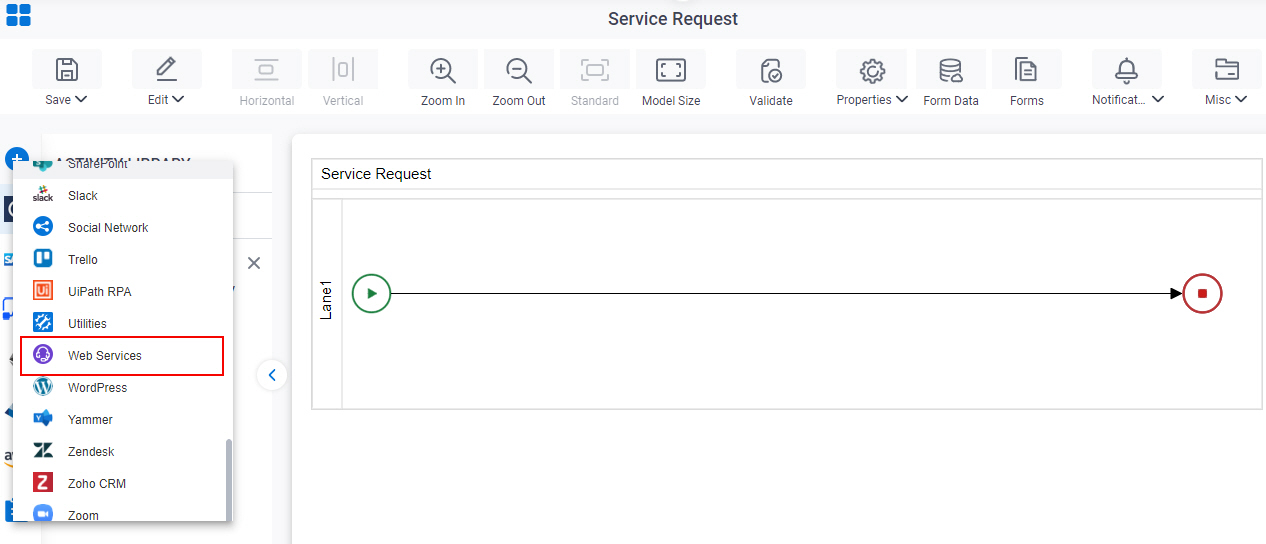
- On the Web Services
tab,
drag the OData Query Entity
activity onto your process.
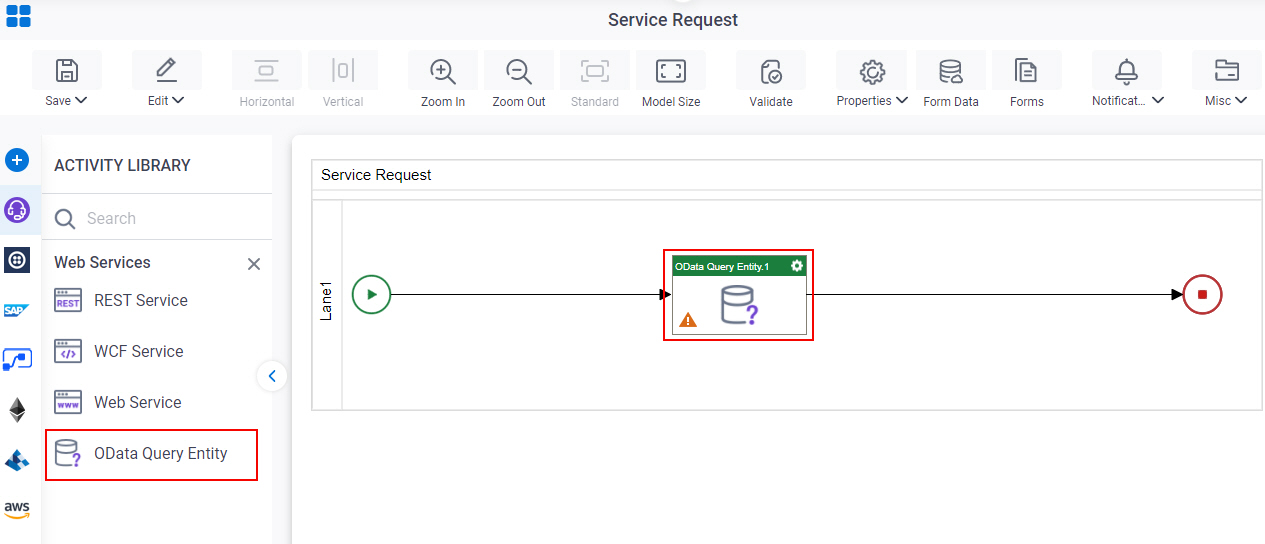
Procedure
- Complete the fields on the General Configuration screen.
- Click OData Query Entity Configuration
 .
. - Complete the fields on these screens:
- OData Query Entity Configuration > Query String Options tab.
- OData Query Entity Configuration > Create Conditions.
- OData Query Entity Configuration > Response tab.
For more information, refer to Get Entity Sets from OData.
- (Optional) Click Advanced
 >
Email Notifications
>
Email Notifications  .
.
For more information, refer to Email Notifications screen (Process Activities).
General Configuration
Specifies the basic settings for the OData Query Entity activity.
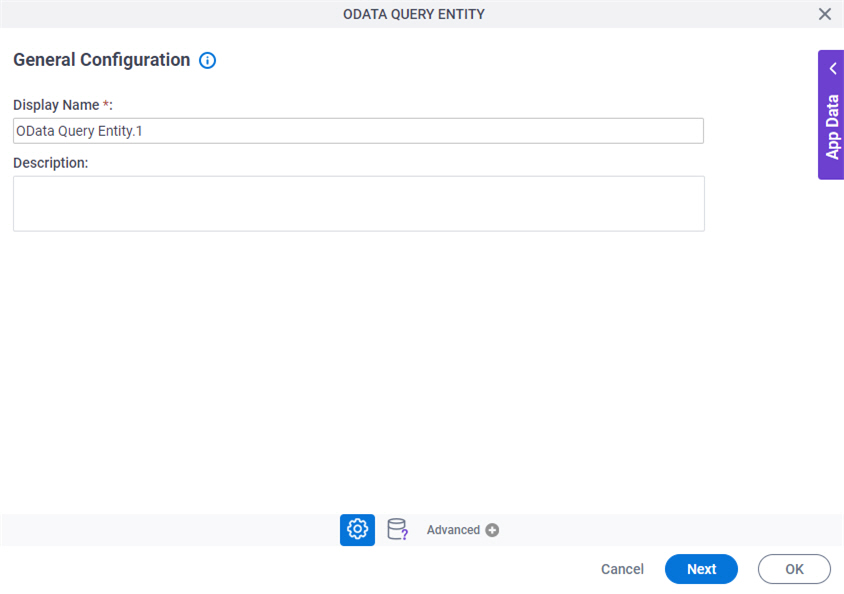
Good to Know
- Documentation for this screen is provided for completeness. The fields are mostly self-explanatory.
Fields
| Field Name | Definition |
|---|---|
|
Display Name |
|
|
Description |
|
OData Query Entity Configuration > Query String Options tab
Configures the query to retrieve your entity sets from your OData service.

Fields
| Field Name | Definition |
|---|---|
|
OData Service |
|
|
Create |
|
|
Entity |
|
|
Configuration |
|
|
Filter |
|
|
Order By |
|
|
Sort By |
|
|
Top | |
|
Skip | |
|
Query String Parameter |
|
OData Query Entity Configuration > Create Conditions
Configures the condition to use in your query to filter entity sets in OData.
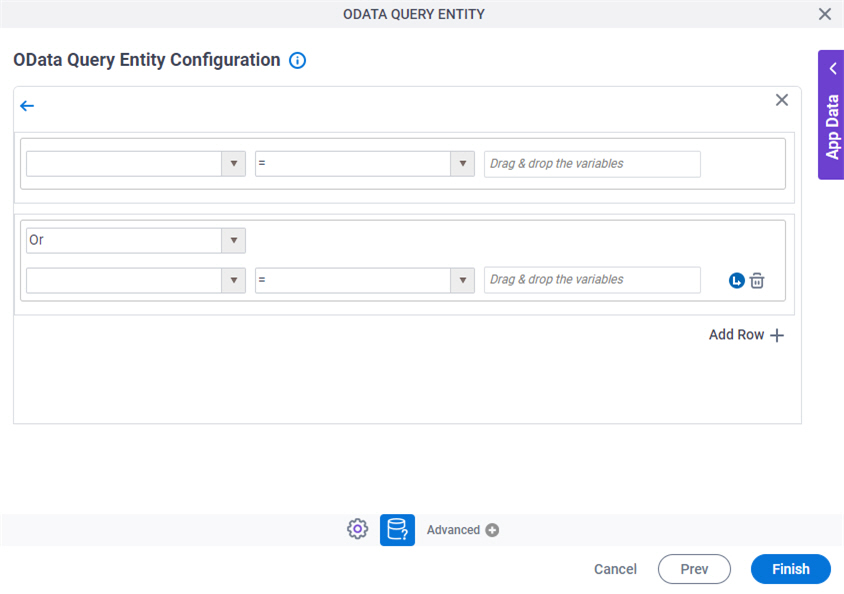
Fields
| Field Name | Definition |
|---|---|
Column |
|
|
Comparer |
|
|
Value |
|
Select Nest Type |
|
|
Add Row |
|
|
Indent Right |
|
|
Delete |
|
|
Back |
OData Query Entity Configuration > Response tab
Specifies how to store the information about entity sets in process data variables.
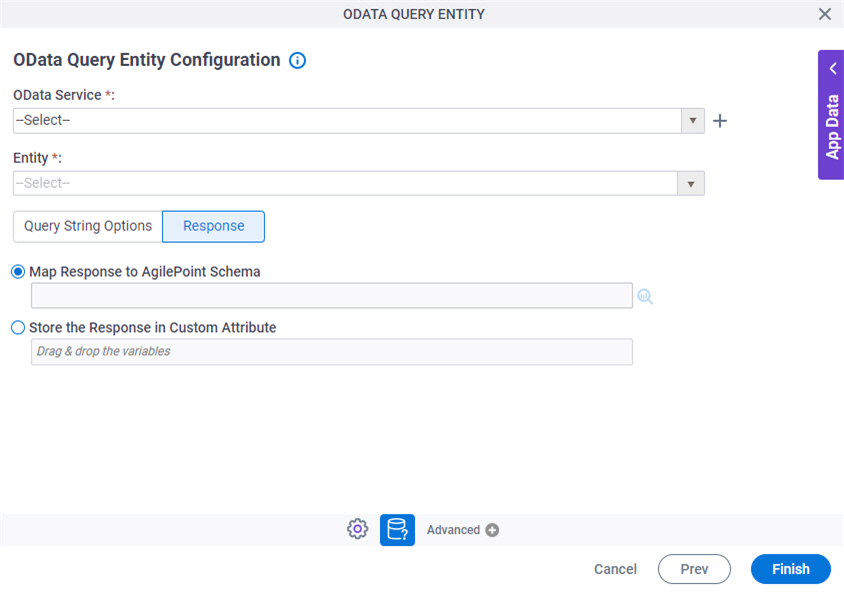
Fields
| Field Name | Definition |
|---|---|
|
OData Service |
|
|
Create |
|
|
Entity |
|
|
Map Response to AgilePoint Schema |
|
|
Store the Response in this Variable |
|






